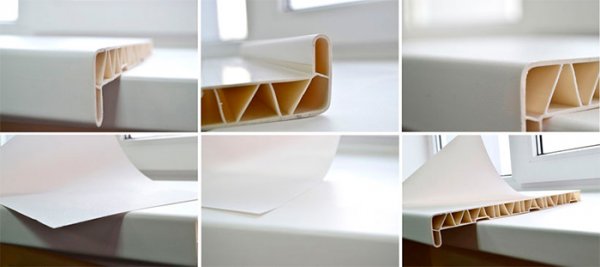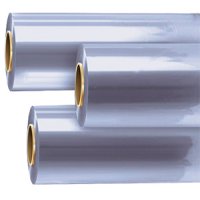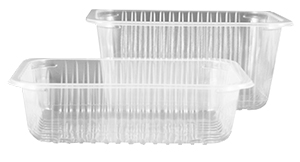|
At all times, society was divided into those who consume and those who produce. Although, ultimately, we are all consumers of certain goods or services. And, buying something, each of us pays special attention to the quality and usefulness of the proposed product. We pay attention to its composition, shelf life, how a product looks like and how it is packed.
The practice shows that everything is possible in the pursuit of profit in the sphere of commodity-money relations, and the line between the truth and the lies is often blurred. Today, we offer to look into some of the problematic issues, not just disturb the people’s minds. Denis M. Dikin, an expert in the field of plastic packaging materials, Commercial Director of JSC "DPO "Plastik", is answering the questions.
Denis, in the nineties of the last century the public was stirred up by a statement of Nature Protection Authorities about the dangers of PVC, the first polymer, which by that time was actively used for construction, packaging of food and medical products, and successfully replaced most of the traditional materials such as glass, cardboard and paper. However, allegations of unsafe PVC packaging appeared from time to time from different sources. What was PVC accused of and how would you comment on this?
At that time a variety of environmental and health organizations blamed PVC materials in toxicity and harmful effects on health, the development of cancer in humans dealing with the material. Messages appeared on air pollution by toxic substances emitted in the process of disposing of PVC waste.
These statements were refuted by conducting global laboratory studies of the influence of PVC and additives used in the processing of PVC on the environment and human health. But different manufacturers of polymeric materials initiated new confrontation.
Why do so many companies refuse from the production / consumption of PVC and what are the consequences?
The reason for this may be the fact that for the past two decades in the media continue echoes of old disputes to be published about the dangers of the use of PVC as packaging and construction material. These publications are accompanied by the proposals of manufacturers of polymer products to make a purchase of similar "non-toxic" materials, where every manufacturer of such polymers is "pulling the blanket" to its side. And if, in view of the situation, there will be rejection of the production of PVC, it will directly affect the global environment. Why? Let’s think.
First of all, non-environmental friendliness of PVC is unsubstantiated.
Even a comparison of PVC with other popular material, for example, for the manufacture of windows, the timber, on a number of consumer and environmental parameters may be not in favor of the latter. Currently, instead of naughty in the processing solid timber glued laminated lumber is mainly used for the production of wooden windows, treated with non-combustible, water-repellent and antiseptic compounds, and no more has a right to be called a natural material than plastic.
 
Secondly, PVC helps reduce harmful emissions into the environment.
Let’s refer to the origins of PVC. Let's start with the fact that every year the world consumes large amounts of caustic soda. Modern life is impossible without sodium hydroxide, since caustic soda is needed for many industrial sectors. However, in the process of caustic production by-product, chlorine gas is produced. The substance is extremely harmful to the environment, if not recycled. Understanding the impact of by-product releases to the environment, humanity began to combine it with ethylene gas, thus obtaining a vinyl chloride gas, which subjected to polymerization gives us the final product, PVC, completely harmless in a bound form.
Speaking about the composition of PVC, it is a chemical compound of carbon, hydrogen and chlorine, which comprises about 43% of ethylene and 57% of combined chlorine derived from sodium and rock salt. During its production a single tree is not cut down, and PVC waste and products with expired service life can be fully recycled, and it again eliminates pollution.
It is worth noting that in many countries pipelines for drinking water are made of PVC pipes. For instance, Germany has more than fifty years of experience in operating such pipelines, which showed the lack of harmful contaminants in water.
The main distinguishing characteristics of packaging made of rigid PVC films include minimal deformation at "hot fill", i.e., margarine; high impact strength of packaging; product protection from UV radiation; low electrified surface; possibility of obtaining both high-clarity and light-tight container; good barrier properties against penetration of gases into the package and leakage of odors.
In spite of all the attacks on PVC film there are undeniable facts proving that the production of PVC, compared to other polymers, consumes less oil feedstock, less energy on the synthesis of PVC, and for its safety and quality PVC is not inferior to other packaging materials. So it is possible to open a discussion about the dangers of phthalates used in the production of PET films, and the dangers of styrene as the main raw material for the production of BOPS-films.
If we talk about the properties of these materials in comparison with PVC, the polystyrene (BOPS) film possesses high rigidity, but in comparison with other polymers, it is characterized by an increased fragility. Without the addition of special additives polystyrene products become more brittle in the cold, so you should not use the packaging made of PS during the winter time and in the regions of Siberia and the Far North.
A PET film is processed only at temperatures above 250°C, which complicates the selection of pigments for coloring and additives to modify the properties. In addition to this, the film not resistant to alkalis under heating. Prolonged contact of the polymer with the alkali-medium product (some vegetables, berries, fruit, olive oil, for example) at elevated temperatures polymer degradation occurs with the release of terephthalic acid, therefore, requires careful selection of the packaging for each specific product.
There is a theory that PVC-films cannot be used for food packaging. Is it so?
This is another myth about the dangers of PVC, and to finally deflate it we should really refer to the food and medical industries.

Let's start with the fact that PVC films have been never stopped using for packaging where purity and chemical resistance are required. They are used at the sites with the highest environmental requirements such as the pharmaceutical institutions, hospitals and children's institutions. During last 50 years storage containers for blood plasma have been made of PVC in the medical industry.
The main claim against "dangerous" PVC materials is the problem of migration of the composition components such as plasticizers, salts of heavy metals. In manufacturing of packaging film materials such substances are not used; organotin compounds are solely used as stabilizers. Considering low concentrations of these compounds in PVC-compositions, due to their good resin matrix resistance to leaching and migration their use is permissible. All components used in the production of rigid films for food and medical purposes, as well as films themselves, pass sanitary and epidemiological expertise confirming the absence of harmful substances in the polymer extracts cured in a variety of environments.

Nowadays in the food industry packaging of rigid PVC films (trays for sausage, fish, cheese slices and other gourmet foods) is of high demand. Such a package is convenient and safe for consumers because it is made exclusively from virgin materials. In order to completely eliminate extraction of chemically active agents during the packing of fat-containing products the PVC film is combined with a barrier polyethylene layer (PVC / PE). As a result, the packaged product is in contact only with the polyethylene layer. Due to purity, transparency, low oxygen permeability and tightness of such packaging food products retain its freshness and original properties for a long time.
Prepared in cooperation with the laboratory and process engineers of “DPO “Plastik”
|
